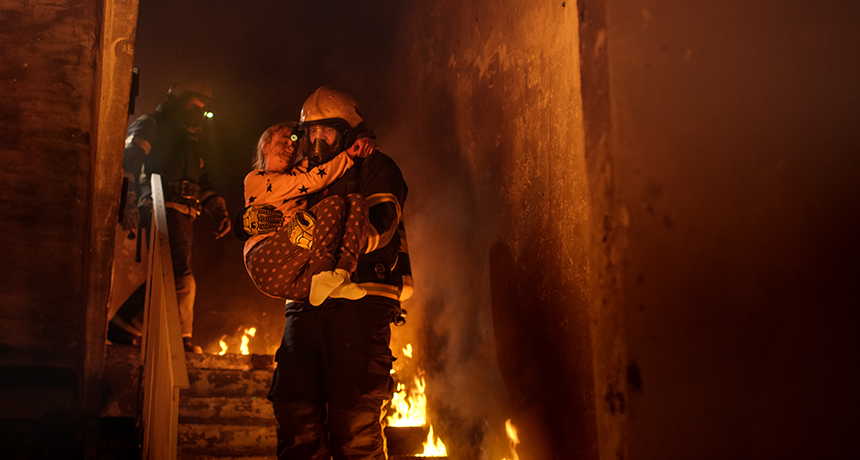A greener way to keep flames away
Scientists use safer materials to create a new flame retardant

Household goods frequently are not fire-retardant, so they can quickly go up in flames, putting a family at risk. Fortunately, new chemicals might make such fires less likely.
gorodenkoff/iStockphoto
Flame retardants are chemicals that can slow or halt the spread of fire. They may be mixed in with a substance, like plastic, or sprayed on the outside of something, like a tent or clothing. These chemicals can keep people safe, but that safety often comes with a price. Some existing flame retardants may be toxic, or poisonous to people, and a few have even been banned.
Researchers from Texas A&M University in College Station think it’s possible to beat back the flames without injuring human health. They’ve created flexible, superthin coatings that can protect plastic foam and the fine cotton fibers of clothing. They say this new fire-fighting technology is relatively safe. Yu-Chin Li and Jaime Grunlan, the scientists behind the new coating, presented their work in August at a national meeting of chemists in Denver.

Grunlan and Li’s team created the new flame retardants like an Italian cook might make lasagna: They alternated layers. But where a lasagna-maker uses noodles and cheese, these scientists used alternating layers of plastic and clay — the same kind of clay you might find in the ground.
That early attempt wasn’t green, or eco-friendly, enough for them. Next, they decided to do away with industrial plastic and instead use an ingredient from the natural world. In place of plastic, they substituted a compound found in shrimp shells called chitosan.
The new material came together like the world’s smallest clay-and-chitosan lasagna. The scientists tested the layered retardant on plastic foam, which is the fluffy stuff often found inside couch cushions. Without the flame retardant, plastic foam melted and burned within 10 seconds of being held over an open propane flame. Plastic foam that had been coated with the new retardant suffered a little burning on the outside, but the inside remained white, soft and unharmed.
That was good for foam, but the scientists quickly discovered that their invention didn’t protect the tiny fibers inside cotton clothing. So they looked elsewhere for inspiration — to skyscrapers.
The steel girders that serve as the skeleton of high-rise buildings often contain a flame-retardant coating. When heated to high temperatures, the coating’s chemicals create a foam that insulates the metal underneath.
Using alternating layers of foaming chemicals, Grunlan and Li’s team created a coating for cloth fibers. Neither of the two chemicals used in the coating foams by itself. Both are needed to cause the insulating foam when heated. But unlike in skyscrapers, these layers are superthin. You’d need 100,000 coatings to reach the thickness of a piece of paper. When the scientists applied the layered coating to cloth fibers and held them over an open flame for 10 seconds, the cloth turned black near the flame but didn’t ignite.
Wilkie points out that although the experiment is promising, fires in the real world don’t go out after 10 seconds. These new materials might slow the spread of flames, but they won’t hold up for long.
The new superthin, fire-fighting chemicals by Grunlan and Li’s team might not be ready for Macy’s, but they’re a promising start. Serge Bourbigot of the University of Lille in Villeneuve d’Ascq, France, told Science News that the layered retardant has great potential to be successful.







